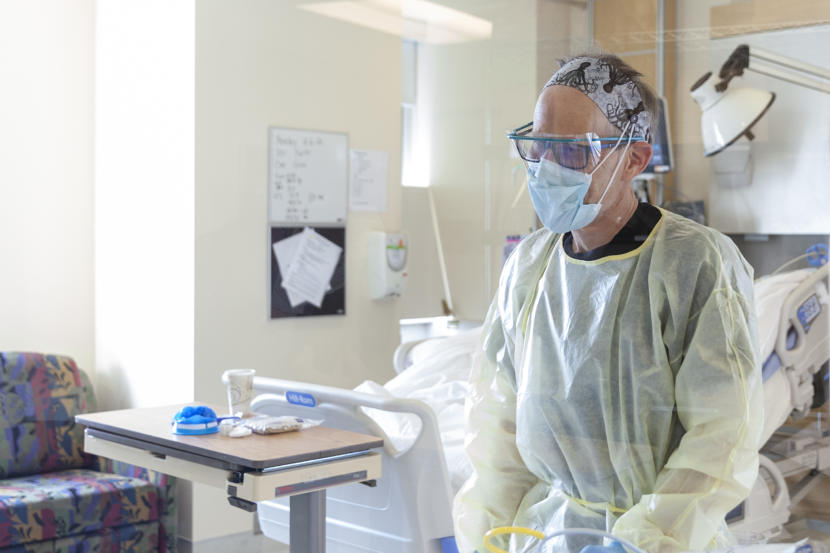
As coronavirus cases continue to skyrocket in the state, cracks are appearing in Alaska’s fragile health care system, officials from seven hospitals said this week.
The problem repeats itself across the state: More and more workers are out sick or quarantining. At the same time, more patients with coronavirus are filling hospital beds.
“This feels very serious right now,” said Jared Kosin, head of the Alaska State Hospital and Nursing Home Association. “It’s all coming together at the same time and we’ve said, since day one, if this all coalesces into a single event, it’s going to overwhelm the health care system.”
What’s particularly worrisome, health officials say, is that Alaska continues to report record-high numbers of coronavirus infections, with no signs of cases slowing down. And they expect that a portion of those infected will end up seriously ill, needing care in the state’s already strained hospital system.
They have asked for the state to take additional measures, including a statewide mask mandate, to slow the spread. The governor’s office continues to encourage individuals and local communities to take their own measures instead.
Already, 1 in 10 patients in Alaska hospitals have COVID-19.
On Thursday, Alaska’s Chief Medical Officer Dr. Anne Zink said the state has gotten to a point of “really limited capacity for ICU beds.” It’s uncertain whether there will be enough staffed beds to keep up with the coronavirus surge, she said.
Hospital officials are bracing for the worst. They say it’s already harder to shift patients, share resources and manage hospital capacity — a complicated calculation of space, equipment and staff that is constantly changing.
Here’s what providers say they’re up against:
ANCHORAGE
At Alaska’s largest hospital, Providence Alaska Medical Center, staffing is the biggest challenge, according to chief medical officer Dr. Michael Bernstein.
“We have a significant portion of our staff that need to be out,” he said. “And there’s more competition for finding people from other parts of the country to help.”
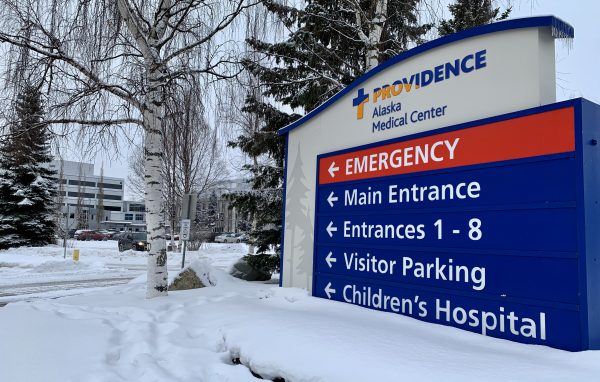
The number of employees absent at Providence has grown with community spread of the virus, Bernstein said. The hospital has tallied anywhere from 80 to 100 workers out on recent days, with a majority of the absences tied to the coronavirus. That’s about double the number of staff typically out.
“Most days, we are able to absorb everything that we wanted,” Bernstein said. Some days, employees have to work extra shifts.
The Alaska Hospitalist Group, a private group of doctors that serve hospitals in Southcentral, also recently added another internist in Providence’s ICU to provide additional support, said Dr. Tim Bateman, the group’s president.
“So we are, you know, starting to have to utilize our surge planning capacity,” he said. “We expect it to get worse on a physician front, and we have plans in place.”
Bernstein said Providence is also “aggressively looking to bring in temporary workers from Outside,” but it’s in tough competition with hospitals across the country. Coronavirus hospitalizations in the United States hit an all-time high this week.
If the number of coronavirus cases in Alaska continues to rise at the same rate as they are now, Bernstein said, the hospital will not be able to continue all of the services it currently provides.
It’s also preparing for the possibility of many more sick patients and deaths.
The hospital said it has acquired a refrigerated trailer to be used as a temporary morgue, if needed. It added the trailer in response to the recent rise in cases, hospitalizations and deaths.
At Alaska Regional Hospital, staffing is a top concern.
The percent of employees testing positive for the coronavirus has risen rapidly over the past two weeks, according to Kjerstin Lastufka, the hospital’s director of public relations.
“Staffing-wise, we are doing fine right now, but the impact of the virus spreading within our caregiver community is definitely something that’s keeping our leadership team awake at night,” she wrote in an email Thursday.
Alaska Regional has not stopped providing any services, she wrote, but has “on occasion delayed a surgery for a day or two until we have ICU bed capacity.”
The Alaska Native Medical Center in Anchorage is already using new space for care.
It has converted one wing of a housing unit into an alternate care site, and routinely has five to 10 patients there, to help ease pressure in the hospital, said Dr. Bob Onders, ANMC interim chief executive.
Onders said he expects the hospital to convert a second wing, too, “because we anticipate the need for even more beds.” The Indian Health Service is also sending about 14 health care workers to help with staffing.
The additional support, paired with the medical center’s current staff, who Onders praised as working hard, will still not be able to handle a big surge in patients. Administrators are trying to recruit more employees.
But, Onders said, the math doesn’t work when he accounts for the infections he knows are in the pipeline — on their way to hospitals — and models of how quickly cases will multiply if Alaskans’ behaviors don’t change.
“We will do the best we can, but if spread continues at this rate there’s no way we’ll be able to staff enough hospital beds,” he said.
Already, limited ICU bed capacity is having impacts.
YUKON-KUSKOKWIM REGION
The Yukon-Kuskokwim Health Corp. serves the region with the state’s highest rate of coronavirus infections. It does not have an intensive care unit at its Bethel hospital.
So when patients need that level of care, an employee starts calling hospitals in Anchorage to see if they have room, and a flight is arranged.
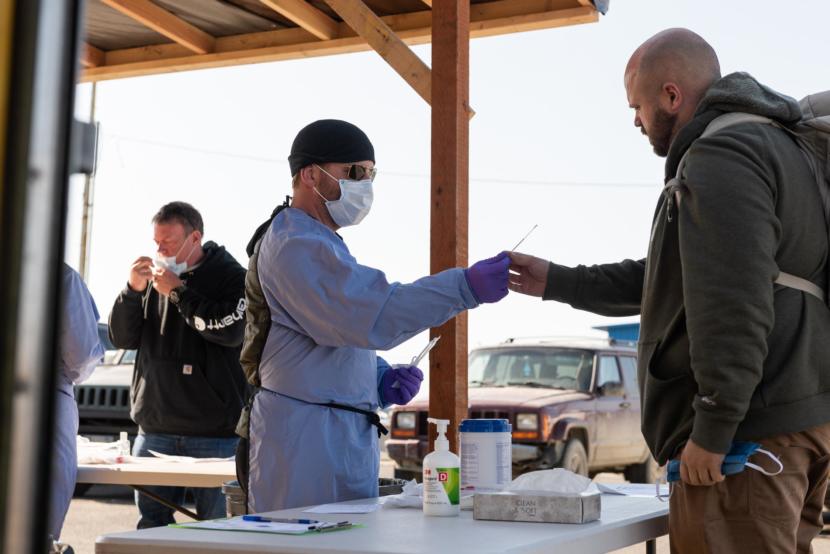
Earlier this week, it had four patients it could not find ICU beds for in the city, said Dan Winkelman, president and chief executive of YKHC. It had to send them somewhere else.
They were not all coronavirus patients, Winkelman said, but he believes the virus is making it harder for the health corporation to find hospital beds in Anchorage.
“That’s incredibly concerning,” he said. “As the COVID crisis increases throughout the state, we’re running into having less options in Anchorage where we normally medevac our patients.”
While it’s not unusual for Anchorage hospitals to temporarily divert patients away now and then, YKHC Chief of Staff Dr. Ellen Hodges said, “this is certainly much earlier than we’ve experienced and a higher volume of patients.”
Also, she said, she’s expecting hospitalizations to increase as the region sees more COVID-19 infections among older residents, who are more likely to develop serious symptoms from the virus.
“It’s like the arc of the pandemic in every other part of the country. The difference, of course, is that our resources are a little more limited,” she said. “And to transfer, it’s not a helicopter or an ambulance ride, it takes a lot more time.”
Winkelman said he wants more action from the state government before hospitals reach a crisis point.
“What is the plan to strengthen health strategies across the state of Alaska,” he asked. “I’m waiting to find out when universal masking is going to be mandated throughout the state.”
FAIRBANKS
At the Fairbanks Memorial Hospital, like in Anchorage, exposure to COVID-19 in the community is causing problems for staffing.
”You have employees, you know, that they have to go to the grocery store,” said Foundation Health Partners Incident Commander Clint Brooks.
“They have to go get gas for their vehicles,” he said. “All the things that you’re trying to do. And of course our employees are trying to stay socially distanced and do the handwashing and the mask wearing. But, when you’re out in public when you have widespread community transmission it’s — you know — you can pick up the virus.”
Since the beginning of the pandemic, the hospital has had 60 employees test positive for the coronavirus, Brooks said.
It’s hard to recruit enough additional staff to fill in. Normally, many Alaska hospitals rely on traveling health care workers, including nurses and specialists, who come into the state to fill short-term gaps.
That’s more challenging now.
At the beginning of the pandemic, when hospitals in Alaska thought they could be overrun with coronavirus, Brooks said, they had those traveling employees. But hospitals weren’t overwhelmed then, and with the state’s ban on elective procedures and tanking budgets, hospitals across the state let those travelers go.
Now demand for those roving nurses and other health staff has surged along with cases all over the U.S.
“A lot of the hot spots were paying an exorbitant amount of money to get people to come to help them during their crisis times like in New York City and Seattle,” Brooks said.
“And so a lot of the travelers that were willing to take chances went to those locations because the amount of money they were paying with like hazard pay and bonuses and things of that nature was attractive to them.”
Dr. David Scordino is a medical director of Alaska Regional Hospital in Anchorage and treasurer of the Alaska Chapter of the American College of Emergency Physicians. He described the market for traveling health care workers as “extremely competitive right now.”
Alaska also faces added staffing challenges because of its geography, he said.
Hospitals in other states can quickly move staff between hospitals from nearby towns or states. If Alaska has a large number of health care workers out sick because of a coronavirus outbreak, there’s not much backup.
“Obviously, when we start having health care workers get sick, the hospital capacity is just going to go down,” Scordino said. “And we don’t have a good way of building that back up. And I think that’s one of the biggest concerns as we look at capacity.”
KENAI
On the Kenai Peninsula, health care workers getting exposed to COVID-19 are making it difficult for some hospital departments to operate normally.
This week, Central Peninsula Hospital had 63 staff members across 23 departments either sick with COVID-19 or quarantining because of exposure.
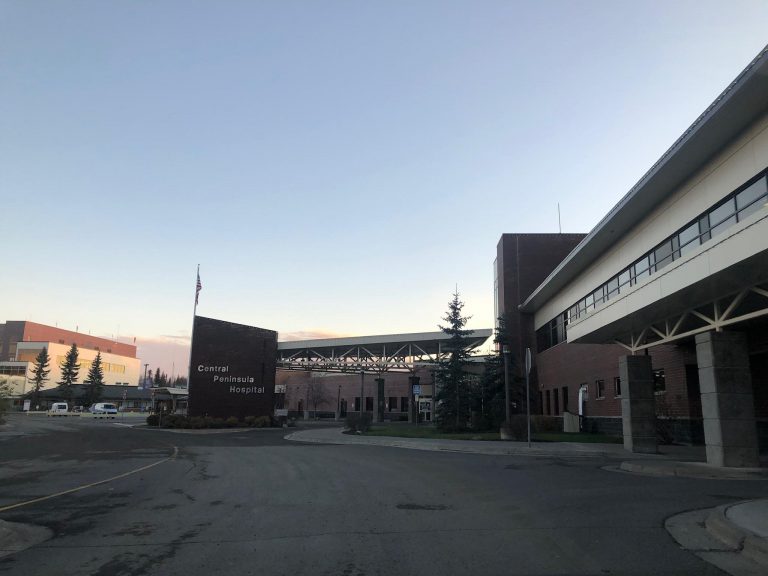
“That’s the highest number we’ve had,” said Bruce Richards, the hospital’s external affairs manager.
As more staff are absent, normal hospital operations like cardiac ultrasounds become trickier to manage.
Richards said the hospital uses the ultrasounds for a variety of reasons, including to determine whether a patient with a heart condition needs to be medevaced.
It has just three staff members who can perform the ultrasounds, and on a busy day, they’ll do about a dozen of them.
But recently one of those staffers was on extended leave. One went on vacation. Then, the third had to quarantine because of exposure to the coronavirus.
“That left us with nobody,” Richards said.
Luckily, he said, the tech who was on vacation came back early to help.
“But you can see how fragile this gets,” he said. “You can have that in multiple different departments throughout a hospital where there’s not many people.”
In recent weeks, the hospital’s wound care clinic ended up with several specialized nurses in quarantine. One nurse had to cover for the three who were out. Similar outbreaks are happening with cleaning staff, with certified nursing assistants and with the hospital’s nursing home.
But the work hasn’t slowed down. On Tuesday, Richards said the hospital was full.
“It’s been full the last few days,” he said.
A few days earlier, he said, the hospital had eight COVID-19 patients, its highest total yet.
“It’s not good,” Richards said. “Are we making it? Yes, we are. But we are so close to it not being made.”
JUNEAU
In Juneau, Bartlett Regional Hospital Chief Nursing Officer Rose Lawhorne said things are relatively stable. The hospital generally has just a few COVID-19 patients at a time.
But there are indicators that things could become challenging if there is a new wave of patients locally and the hospital has to transfer some of them out.
Lawhorne said they’ve sent a few patients to Anchorage without trouble, but now they’re getting reports that patient volumes are surging.
“A couple of hospitals are full and they’re boarding patients in the ER,” she said.
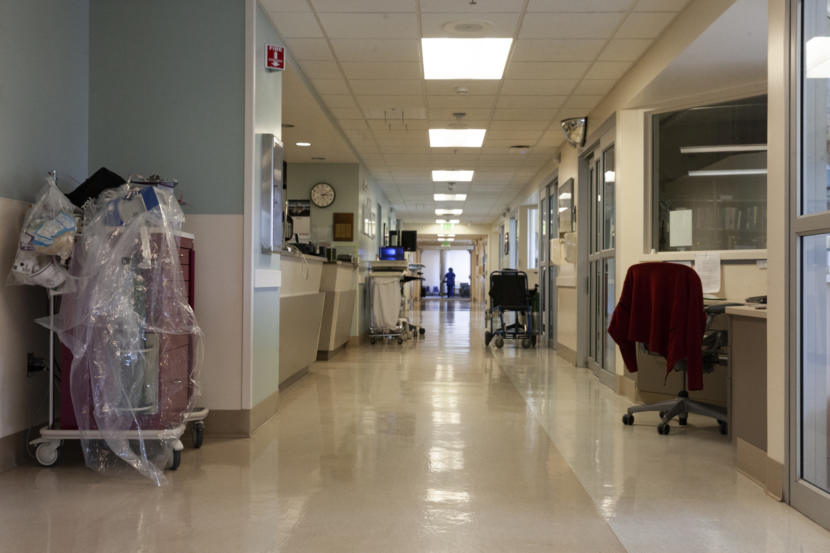
Still, Lawhorne said, she wants to avoid the perception that all hospitals are too full to accept new patients and risk people dying at home because they don’t seek medical care when they really need it.
Across the hospitals, health care officials called on Alaskans to help get the spread of the coronavirus under control and to help prevent more cracks in the health care system by following health precautions, including wearing a face mask and staying at least six feet apart from non-household members.
